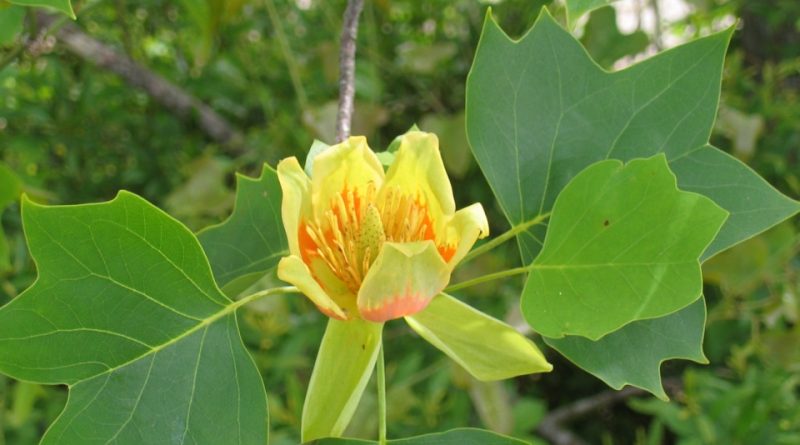Liriodendron tulipifera
Liriodendron tulipifera
The American tulip tree or tulip tree (Liriodendron tulipifera L.) is an arboreal species of the family Magnoliaceae.
Systematics –
From the systematic point of view it belongs to the Eukaryota Domain, Kingdom Plantae, Magnoliophyta Division, Magnoliopsida Class, Order Magnoliales, Family Magnoliaceae and therefore to the Genus Liriodendron and to the L. tulipifera Species.
Etymology –
The term Liriodendron comes from the Greek λείριον leírion, lily and from δένδρον déndron, tree: lily tree, referring to the large whitish flowers. The specific tulip epithet is derived from tulip, tulip and from fero, port: which has flowers similar to those of tulips.
Geographic Distribution and Habitat –
The tulip tree is a species native to the eastern United States to the states of Indiana, Tennessee and Mississippi, where it forms mixed deciduous forests that extend from sea level to about 1500 meters above sea level. Its introduction into Europe took place around the mid-seventeenth century both as an ornamental and forest plant.
Description –
The Liriodendron tulipifera is a conical shaped tree, which can reach heights of 20-30 meters with a generally straight shaft with a diameter of 3 meters. It has rapid growth and prefers deep, rich and moist soils; the leaves are deciduous of a lobed square shape with apices; the flowers are bisexual, terminal similar to large tulips, large very pale green, rarely white, which appear in early summer and have a high concentration of nectar. The dried fruits (samareti) are 6-7 cm long and when they ripen they fall off the wind.
Cultivation –
The tulip tree prefers moist, fresh and deep soils, possibly with slightly acidic pH; however, it tolerates various types of soil with moderately alkaline or tendentially acidic pH, provided they are fresh and well drained. The young plants are placed in sunny or semi-shaded places; these plants generally do not fear the cold, more likely they fear the excessively hot summers, for this reason the young specimens may need shading during the hottest months of the year, the drought can affect causing an early defoliation, especially in the year of transplantation . In case of planting more than one tree you must distance them at least 9 meters. For details of the cultivation technique, the following sheet can be consulted.
Uses and Traditions –
All parts of the tulip tree are toxic to humans. In the places of origin the plant lends itself to various uses; it is used in forestry and for the production of lumber that is light yellow and that is used for applications similar to that of poplars. Being a tree with a tall and straight trunk, it supplies a timber that, with its characteristics of workability, stability and specific weight (480 kg / m³ dried) make it suitable for a large number of uses. It has a whitish color, evident veining with dark or greenish flames and a soft consistency. It is particularly appreciated, as well as for its economy, for the excellent reaction to treatments with paints, stains and impregnating agents. The light color and the compactness of the grain allow to reproduce faithfully the colors of walnut, cherry and other closed pore essences. In Italy it is mostly used for ornamental purposes.
From this tree, in the United States, honey is obtained thanks to the high presence of nectar in its flowers. In times past, the American Indians used the rind of this tree for its tonic and febrifugal qualities.
Preparation Mode –
Except for the production of honey, which is obtained in its areas of origin, Liriodendron tulipifera has no other food uses no longer has particular food or therapeutic uses.
Guido Bissanti
Sources
– Acta Plantarum – Flora of the Italian Regions.
– Wikipedia, the free encyclopedia.
– Treben M., 2000. Health from the Pharmacy of the Lord, Advice and experience with medicinal herbs, Ennsthaler Publisher
– Pignatti S., 1982. Flora of Italy, Edagricole, Bologna.
– Conti F., Abbate G., Alessandrini A., Blasi C. (edited by), 2005. An annotated checklist of the Italian vascular flora, Palombi Editore.
Warning: Pharmaceutical applications and alimurgical uses are indicated for informational purposes only and do not in any way represent a medical prescription; there is therefore no liability for their use for curative, aesthetic or food purposes.


